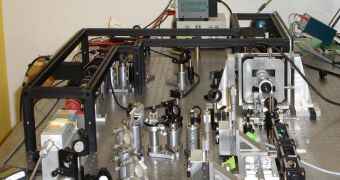A group of investigators recently managed to shed more light on the mechanisms underlying the operating principles of a special class of motor proteins in the human body. These types of molecules play a fundamental role in transporting various important chemicals between various locations inside a cell, but thus far scientists have been unable to determine precisely how these transport processes took place. That changed recently, thanks to a new study by specialists at the Technische Universitaet Muenchen (TUM) and Ludwig Maximilians Universitaet Muenchen (LMU).
Their work was focused on a single, interesting motor protein, whose functions they detail in a paper published in the latest issue of the esteemed journal Proceedings of the National Academy of Sciences (PNAS). The group explains that one of the reasons why they decided to get engaged in this work was the fact that motorized transport proteins are widely considered to be one of the most important aspects underlying higher organisms. They are extremely efficient at transporting chemicals across cells, which allows for a very wide variety of processes to take place faster as well. Notoriously lacking in this class of proteins are bacteria, which therefore cannot form more complex, multicellular organisms,
“Our results show that a molecular motor must take on a large number of functions over and above simple transport, if it wants to operate successfully in a cell. It is impressive how nature manages to combine all of these functions in one molecule. In this respect it is still far superior to all the efforts of modern nanotechnology and serves as a great example to us all,” explains TUM Physics Department professor Matthias Rief. Two of the necessary traits that motor transport proteins need to contain are the ability to be switched on and off, and also the ability to accept, carry and renounce loads. The German group investigated such molecules in the primary cilia, sections of cells which play a role in gathering information from the outside, and then passing them on inside the cell.
The researchers noticed that the proteins moved along microtubules, which are protein fibers extending throughout the cells. It was found that one of the most effective transport molecules was made up of one KLP11 and one KLP20 protein. The scientists were then able to understand why this combination was formed. They say that KLP20 proteins generally have no “brakes,” which means that, when not affixed to KLP 11 proteins, they “walk” on microtubules without stopping. The end result of this would be a lot of wasted energy, and so the cells developed mechanisms of preventing this from happening.

 14 DAY TRIAL //
14 DAY TRIAL //